A few weeks ago, I was presented with an RS Aero dagger board and rudder blade that had multiple damaged areas to both the leading and trailing edges. The main surfaces of the foils had no damage, it was just the edges that needed some repair work.
Below are some images of the damaged RS foils. The damage may look bad, but with a few simple tools, a good warm day (or a heated workshop) any DIY'er can make a good repair, and get a fair finish with patience, and plenty of 'elbow grease'.
Thanks to John Purdy of DQSC for the video work and images.




Tools and materials that are needed to complete the work:
Tools:
1. A 'Dremel' or hand file.

2. Latex gloves and a suitable dust mask.
3. Lint free cloth.
4. Optional - a hot air gun.
Materials:
1. Acetone solvent.
Acetone - 500ml – ROOSTER UK (roostersailing.com)
2. Assorted wet and dry papers + a 120 grit paper (used dry), and suitable small sanding block for the 'wet' sanding.
Wet and Dry Waterproof paper - per sheet – ROOSTER UK (roostersailing.com)
3. FARECLA G3 Rubbing Compound Regular cutting paste.
Farecla G3 Finishing Liquid Paste Compound - 400g – ROOSTER UK (roostersailing.com)
4. FARECLA G10 Finishing Compound.
5. Basic white gelcoat and the catalyst.
Basic Gelcoat 75ml Tin (Clear and White) – ROOSTER UK (roostersailing.com)
Polyester Catalyst for all polyester resins and gelcoat - 50ml – ROOSTER UK (roostersailing.com)
6. Quality masking tape.
7. Mixing cups and wood (or plastic - they are reusable, as they can be cleaned up with the Acetone solvent) mixing sticks.
West System 804 Reusable Plastic Mixing Stick – ROOSTER UK (roostersailing.com)
Mixing Stick - Large – ROOSTER UK (roostersailing.com)

8. A large sanding block for the 120 grit oxide paper.
Work Flow:
1. First clean down the complete foil (the dagger board in this case) with acetone solvent using a clean cloth to remove any containments, grease etc. Please wear gloves when handling acetone. If you get acetone on the skin it may cause skin irritation; skin may be dry, red and inflamed. Eye contact with liquid and acetone vapours can lead to irritation or eye damage.
2. Using a small hand held 'Dremel' or metal file clean out the damage area and work the edge of the damage area to create a bevel or 'v' shaped edge to the repair area. See the below video. The Dremel used below had a small 60 grit disc fitting to remove the damage areas and make clean. Please wear a suitable dust mask.
3. Using the Acetone solvent clean the damage areas to remove the dust and containments etc as seen below image:

4. Mix the white gelcoat well to ensure the wax additive, the pigment and resin are all well mixed together.
Adding the Catalyst:
Catalyst 2% is ideal, 3% is a fast mix. Additions outside these bands in not advisable for proper curing, in fact adding more than 4% may result in a failure to cure. The pot life of these mixes is also determined by temperature. The higher the temperature the faster the cure. Ideal temperature is 16 - 20°C
Use 6 drops into approx. 10ml of resin. (As a guide 1 UK tablespoon = 14.2ml)
Curing: At 15C pot life is approx 15 mins, repair cure 1-3 hours. At higher temps, cure times will be reduced and colder, will be slower. Never work on surfaces colder that 5C and do not allow the resin or catalyst to freeze.
The above video was taken when the air temp was approx. 20deg C - ideal for gelcoat repairs.
5. Mix the gelcoat and catalyst together for at least 1-2 mins and if a little cold, use a hot air gun on a low setting to decrease the cure/setting time of the gelcoat mixture as seen in the video.
6. Apply the gelcoat mixture to the damage areas, using a 'stippling' technique (either with a small stick or small brush) to apply the mixture, so to try and prevent small air pockets forming. See below video:
7. You can, once the gelcoat is applied, cover the repaired area with Sellotape (or similar) to even out the finish of the gelcoat surface and helps reduce wet standing of the repair when cured. See the video below:
20 mins later....
8. One the first layer or coat of gelcoat on the repair has gone off, you can repeat the process again to add another coat to the repair area(s) if the area is a little low in surface height.
9. Once the final coat (2nd coat in this case) of gelcoat has cured (overnight in this case) this is how the foils look before final shaping and fairing.
10. Using a 120 grit oxide glass paper (dry) very lightly rub down the excess gelcoat, with a block, taking off just the excess/high gelcoat.
Final wet and dry of the repaired gelcoat surfaces:
11. Now, using a quality masking tape, mask up around the repaired areas as shown in the below video. The idea is that the tape will help protect the existing gelcoat surface and try to prevent you accidentally rubbing through the very thin original white gelcoat surface of the foil.
12. The final wet and dry fairing can now start. Start with a 320 grade wet and dry paper.
13. Use the 320 grit then a 400 grit paper, with a little drop of detergent in the water. This will prevent the paper from clogging up. After that, wash down with clean water and dry it off. Then use the 600 grit, followed by the 800 grit grade - you can go to 1200 grit to remove the final fine scratches from the surface. Suggest use genuine 3M paper, it is the best - Wet and Dry Waterproof paper - per sheet – ROOSTER UK (roostersailing.com) - it does last a long time compared to low cost papers.
After the 1200 grit, go and use the FARECLA G3 Rubbing Compound on a damp clean cloth to apply, to remove any small imperfections.
14. Final polish - Use FARECLA G10 Finishing Compound again on a damp cloth.
The finished results:
RS Aero Dagger Board
RS Aero Rudder Blade
Addendum
Question from a RS Aero owner via FB:
Any ideas on how to fix the trailing edge on the black bit. photo below: the delaminated area is only about 10 mm long.

Answer: I would suggest a little pre thicken epoxy adhesive, such as the WEST G/Flex https://www.roostersailing.com/products/146160 mixed with small amount of Black Epoxy Pigment.
Lift up the delaminated area, clean and then apply your mix. Then clamp and leave to cure for overnight etc. Careful wet sand down and polish etc.



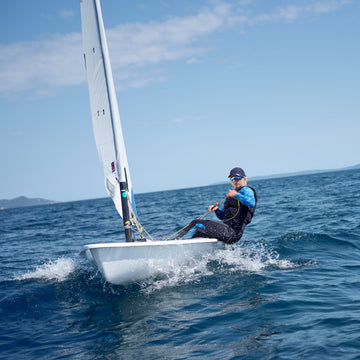




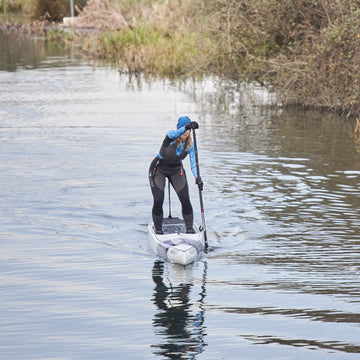
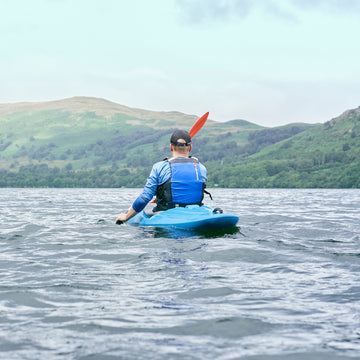
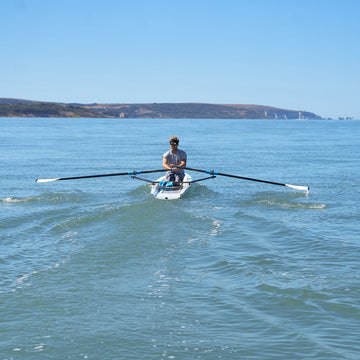
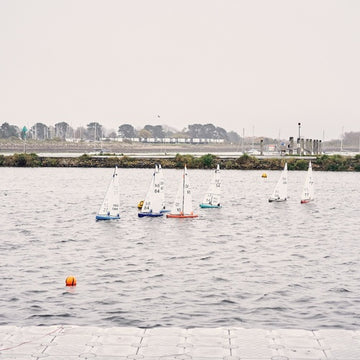








 Select Store
Select Store
 EU
EU
 US
US